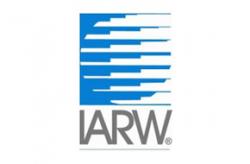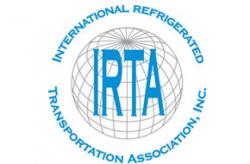Government Connection
The artificial deadline of August 7 that Congressional negotiators had set for reaching a deal on the next round of COVID-19 relief legislation has come and gone. Unfortunately, with key sticking points, like funding for state and local governments and liability shields, still unresolved, the prospects of a comprehensive package coming together in the next few weeks are looking increasingly dim. Ongoing negotiations may be further complicated and polarized by the executive actions that the President took over the weekend which have already been the subject of significant criticisms and threats of legal actions, particularly from Democrats.
As you may have heard the White House announced four executive actions on payroll taxes, unemployment benefits, student loans and evictions. In particular, the actions on payroll taxes and unemployment are likely to raise some significant questions and issues for small businesses and their employees in the coming weeks.
Payroll Taxes
In a Memorandum to the Secretary of the Treasury, the President directed the Secretary to defer the “withholding, deposit, and payment” of the payroll taxes that would otherwise be owed by certain employees between September 1 through December 31, 2020. As you may recall, pursuant to the CARES Act and the Paycheck Protection Program Flexibility Act that were passed earlier this year, businesses have already had the option to defer (50% to Dec. 31, 2021, and 50% to Dec. 31, 2022). Specifically, the Memorandum would apply to payroll taxes owed by employees whose pre-tax bi-weekly pay is less than $4,000. While the Memorandum specifies that the taxes be deferred “without any penalties, interest, additional amount, or addition to the tax,” unless Congress takes further action on this point, these employee payroll taxes will ultimately still be due. The prospect of having to collect and remit these payroll taxes in the future, coupled with the concern about communicating to employees the distinction between a tax deferral and forgiveness, have many employers understandably very nervous. This is before even considering the logistics that would be involved in changing the way payroll is run for some but not necessarily all of their employees.
The Department of Treasury is expected to be releasing further guidelines this week about how it will be implementing the Memorandum which will hopefully provide more direction.
In particular, many businesses will be eagerly awaiting further clarifications on a number of key issues including:
- Whether they will be required to implement the deferral or whether they will be permitted to either collect and hold or collect and remit the payroll taxes for their employees if they (or possibly their employees) elect to do so (Treasury Secretary Steven Mnuchin said in an interview over the weekend that the IRS can’t force employers to stop withholding payroll taxes).
- How the deferred taxes will ultimately be collected (lump sum or over time), what employers’ role and liability will be if they are unable to collect and remit the taxes, for example if the employee is no longer employed and whether, if it is determined that the employer is ultimately liable for taxes they are unable to collect from an employee, the payment by the employer of such taxes will be deemed additional income to the employee that the employer will owe even more payroll taxes on.
- How compensation will be calculated for the purposes of the $4,000 bi-weekly threshold.
Unemployment Benefits
On July 31, 2020, the Federal Pandemic Unemployment Compensation (FPUC) program expired. The FPUC program was created under the CARES Act and provided an additional $600 per week benefit for individuals claiming unemployment (which in most states included individuals who had been furloughed). The continuation of enhanced unemployment benefits has been a key area of discussion as lawmakers have tried to negotiate the latest COVID-19 relief package. While the packages being promoted by both parties’ leadership include some form of extension of enhanced benefits the details are very different. The HEROS Act, which was passed by the House in May, would simply extend the $600 per week benefit through January 31, 2021. The HEALS Act, which was introduced by Senate Republicans in late July, would provide an additional $200 per week through the end of September. Starting in October, states would be directed to provide benefits equal to 70% of an employee’s prior wages with the federal government providing a supplement of up to $500 per person per week to help the states hit that number. This effort to tie the benefits to prior wages is intended to address concerns that enhanced unemployment benefits have deterred employees from returning to work as businesses reopen.
In his Saturday Memorandum to the Secretary of Labor, the Secretary of Homeland Security and the Administrator of FEMA, the President directed the allocation of disaster relief funds to provide for additional unemployment benefits of $400 per week. Initially it appeared that to qualify for the additional federal funding, states would have to cover 25% ($100 per week) of the enhanced benefits, with the remaining $300 per week coming from federal disaster relief funds. After a number of states publically indicated that they simply do not have the funds to satisfy such a match or would only be able to do so for a few weeks, the White House clarified that funds will be made available for a $300 per week enhanced benefit whether or not the states are able to chip in the additional $100. As with the payroll deferrals, those with an interest in this issue are eagerly awaiting further federal guidance.




Add new comment